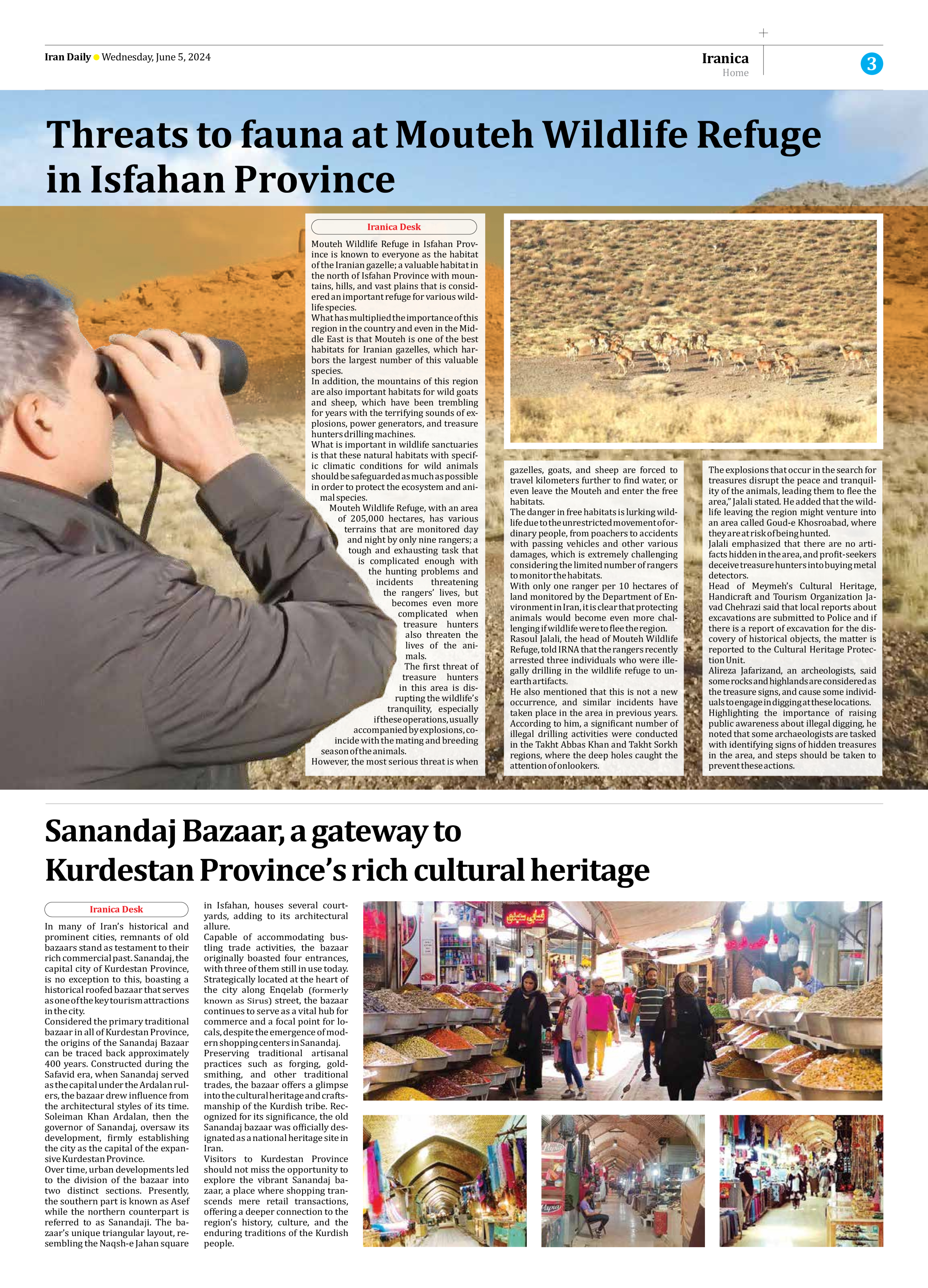
Threats to fauna at Mouteh Wildlife Refuge in Isfahan Province
Mouteh Wildlife Refuge in Isfahan Province is known to everyone as the habitat of the Iranian gazelle; a valuable habitat in the north of Isfahan Province with mountains, hills, and vast plains that is considered an important refuge for various wildlife species.
What has multiplied the importance of this region in the country and even in the Middle East is that Mouteh is one of the best habitats for Iranian gazelles, which harbors the largest number of this valuable species.
In addition, the mountains of this region are also important habitats for wild goats and sheep, which have been trembling for years with the terrifying sounds of explosions, power generators, and treasure hunters drilling machines.
What is important in wildlife sanctuaries is that these natural habitats with specific climatic conditions for wild animals should be safeguarded as much as possible in order to protect the ecosystem and animal species.
Mouteh Wildlife Refuge, with an area of 205,000 hectares, has various terrains that are monitored day and night by only nine rangers; a tough and exhausting task that is complicated enough with the hunting problems and incidents threatening the rangers’ lives, but becomes even more complicated when treasure hunters also threaten the lives of the animals.
The first threat of treasure hunters in this area is disrupting the wildlife’s tranquility, especially if these operations, usually accompanied by explosions, coincide with the mating and breeding season of the animals.
However, the most serious threat is when gazelles, goats, and sheep are forced to travel kilometers further to find water, or even leave the Mouteh and enter the free habitats.
The danger in free habitats is lurking wildlife due to the unrestricted movement of ordinary people, from poachers to accidents with passing vehicles and other various damages, which is extremely challenging considering the limited number of rangers to monitor the habitats.
With only one ranger per 10 hectares of land monitored by the Department of Environment in Iran, it is clear that protecting animals would become even more challenging if wildlife were to flee the region.
Rasoul Jalali, the head of Mouteh Wildlife Refuge, told IRNA that the rangers recently arrested three individuals who were illegally drilling in the wildlife refuge to unearth artifacts.
He also mentioned that this is not a new occurrence, and similar incidents have taken place in the area in previous years. According to him, a significant number of illegal drilling activities were conducted in the Takht Abbas Khan and Takht Sorkh regions, where the deep holes caught the attention of onlookers.
The explosions that occur in the search for treasures disrupt the peace and tranquility of the animals, leading them to flee the area,” Jalali stated. He added that the wildlife leaving the region might venture into an area called Goud-e Khosroabad, where they are at risk of being hunted.
Jalali emphasized that there are no artifacts hidden in the area, and profit-seekers deceive treasure hunters into buying metal detectors.
Head of Meymeh’s Cultural Heritage, Handicraft and Tourism Organization Javad Chehrazi said that local reports about excavations are submitted to Police and if there is a report of excavation for the discovery of historical objects, the matter is reported to the Cultural Heritage Protection Unit.
Alireza Jafarizand, an archeologists, said some rocks and highlands are considered as the treasure signs, and cause some individuals to engage in digging at these locations.
Highlighting the importance of raising public awareness about illegal digging, he noted that some archaeologists are tasked with identifying signs of hidden treasures in the area, and steps should be taken to prevent these actions.







